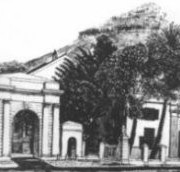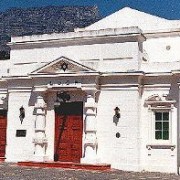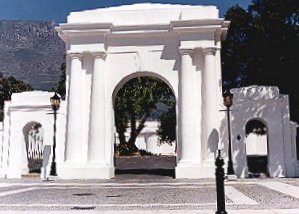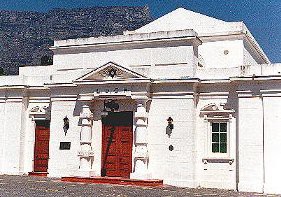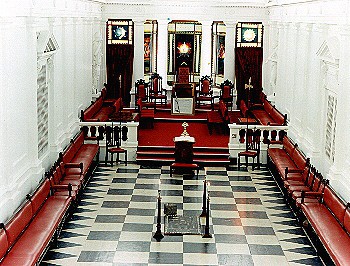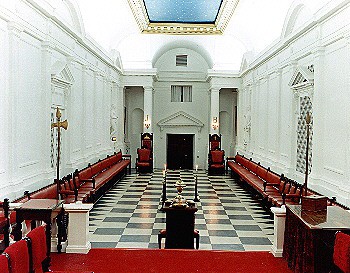Anonymous Apprentice, August 2010
In this paper I present my understanding of Freemasonry relevant to the first degree. The past few months have been extremely difficult and challenging. I have been challenged by the information I have learnt from my instructor, my own research and my journey of self discovery. Many questions have come to my mind during the time of my instruction. It is with these questions that I present this paper.
The questions are as follows:
- Why have I chosen to become a Freemason?
- Have I been practising Freemasonry unknowingly before I became one?
- What is my basic understanding of Freemasonry in the first degree?
- What is my understanding of the Tracing Board? And how can I apply the symbolic meaning of it to my life?
Why have I chosen to become a Freemason?
I have always had an enquiring mind, always questioned and never took anything for granted. Coming from a background of following instructions and ideas simply because “that is the way things are” you can imagine that questioning everything could not have been easy. Very often I was not given the answers that satisfied my curiosity. Thus, I was led from the outset on a long and very difficult journey of self knowledge and self discovery. I found myself searching for people who shared my thoughts and ideas about life and its interpretations. I needed a place in the world were I felt understood. I feel that I have found that place in Freemasonry. In this space I find my sincerest beliefs and ideals. I am not judged by my beliefs, faults or achievements. I remain a person like everyone else rich or poor. I am here to learn more about life, myself and to be supported and guided to achieve one of my ultimate goals, to serve humanity, to give back to GOD and to myself.
Have I been practising Freemasonry unknowingly before I became one?
I live by the three principle virtues of Hope, Faith and Charity. Hope that the difficulties we face are within good reason and part of a better plan and outcome. Faith that hope will carry us through our trials and tribulations and Charity I have often given in material and immaterial ways, by contributing with acts of loving kindness, friendship and support among other things.
What is my basic understanding of Freemasonry in the first degree?
I remember my experience in the chamber of reflection vividly. I experienced feelings of impatience and restlessness. In retrospect, I realise how conflicted my mind was at the time and still is at times. The fear of the unknown had been ever present at that moment. My initiation felt overwhelming. I could not absorb the ritual and I could not make out what was happening around me. From a human perspective, I felt torn between two worlds. One that was unknown to me and which at some points in the ritual seemed to have been in total contradiction with my already internalised belief system. I realise now, that every act of the ritual was symbolic of something relevant to my faith and encompasses all of the basic principles thereof.
I have learnt that Freemasonry is a system of knowledge and self discipline. It is a system that requires the willingness to be open to the truth and other ideas. It simply requires mental self surrender. One often has to unlearn some aspects in one’s life in order to grasp concepts of the system beneficially, all in the quest for personal growth and development.
Furthermore, Freemasonry is based on a universal belief in the divine. This belief is illustrated by certain virtue that symbolically teaches me a system of self discovery that leads to a personal degree of self improvement and a inclination towards the betterment of society.
Symbolically Freemasonry has given me the light. A way of seeing and interpreting the world, my life and the lives of other’s differently. I have learnt that the physical symbols have underlying symbolic meaning. Different meanings for different individuals. The symbols and tools taught in Freemasonry have special use for each aspect in my life. Therefore, one has to understand the symbolic meaning of the philosophy in order for the heart to be fully present and the mind to be willing to participate. It is only through understanding that the symbols of my new way of interpreting life can reflect in a meaningful way. Silent meditation and introspection is necessary to discover the lessons learnt about Freemasonry.
What is my understanding of the Tracing Board? And how can I apply the symbolic meaning of it to my life?
The tracing board as I understand it is dedicated to the further discovery of esoteric wisdom and light within Freemasonry. The goal and purpose of the tracing board in my view is to pursue a personal understanding of the Divine in the context of man and his/her individuality. It represents human life, always comprising of opposites.
The tracing board has inherent in it principles of piety and virtue. The tracing board is a plan designed for individuals, to use as a guide for right thought and right action.
In this plan my body represents the temple. Once the spiritual principles are developed within it, it will radiate through me just as the canopy of diverse colours shines bright. Man is physical, psychological and spiritual, all encompassing of an embodied self. Very similar to moving up a ladder these qualities are attained with progress and through time and study. I identify myself with my body, my habits, my soul, my desires, my thoughts and my spiritual self all ascending to a high order of being.
The three principles Faith, Hope and Charity symbolically represents my mind, body and spirit. Faith represents my mind, faith to hold onto what I have been taught before, until I learn and experience Truth. Hope represents my body, hope for my body to become one with my spirit for me to have hope for a fulfilling life and charity represents my spirit since charity symbolically represents love which cannot be seen with the naked eye, the same way the spirit of man often goes unnoticed. Charity also represents the point of light in one’s life since one cannot live freely without caring for GOD, others and oneself. Temperance, prudence, justice and fortitude is charity in its most ample sense.
In this world and the next,wisdom, strength and beauty remains relevant to ones existence. Life requires wisdom to be of service to humanity. Wisdom is where the son rises and never sets, just as GOD is all knowing and never sleeps. One requires strength for spiritual energy and enlightenment and beauty for spiritual life to seek knowledge and then to reflect, and to reflect and seek knowledge again.
I realise the only way in which I would be able to attain improved spiritual developed is through self discipline, spiritual inspiration, spiritual intuition and spiritual insight. I will have to love and be sympathetic of my spiritual self for the light to shine through.
In conclusion, I have discovered that understanding Freemasonry is difficult and complex. Interpretation and introspection is important in understanding how meaningful the Philosophy is to life. Studying Freemasonry requires objectivity and subjectivity respectively. Objectivity is needed for one to keep an open mind while studying the symbolic meaning of Freemasonry and subjectivity is needed for one to understand the symbolism in relation to ones life.
Freemasonry can be defined on three levels. It can be defined on a philosophical, historical and contextual level. Freemasons are individuals who seek universal Truth and self travel. It is an adventure that requires stripping the mind bear were necessary. The process is gradual and requires self love, respect, understanding and patience all of which are necessary to achieve self development and the challenge to work towards the betterment of humanity.

